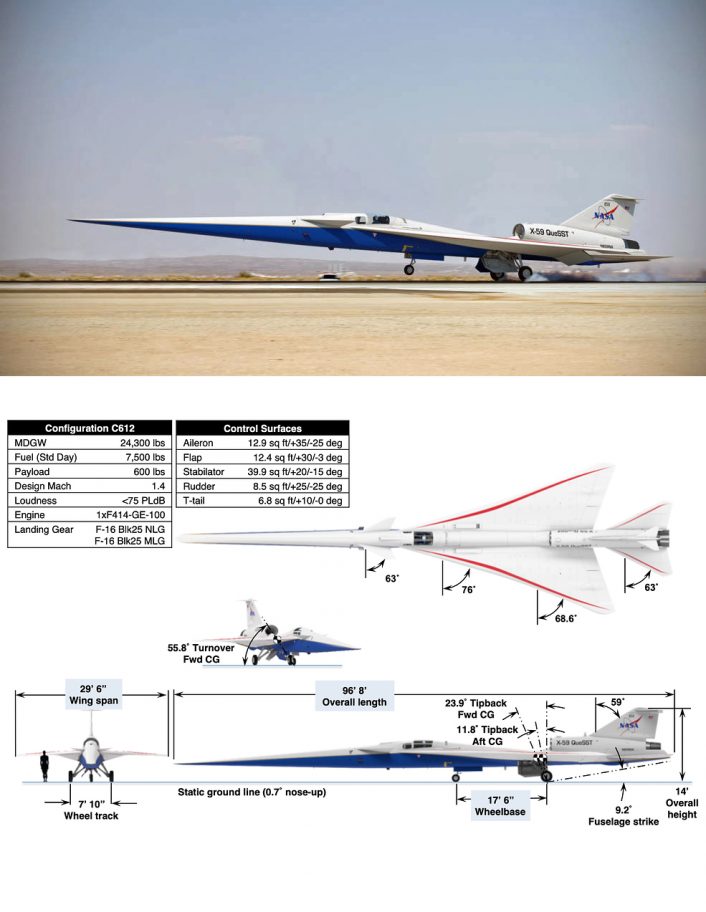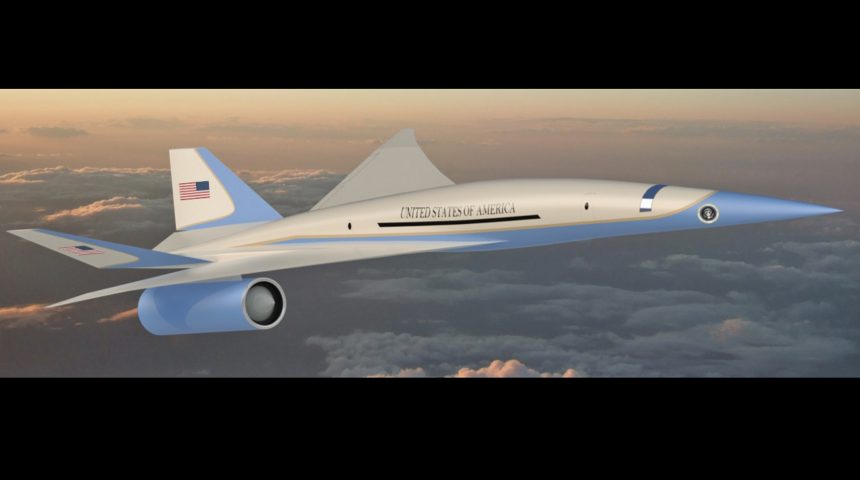Exosonic Awarded Contract to Study Low-Boom Supersonic VIP Transport.
Will future diplomats and U.S. Presidents jet around the world at supersonic speeds to conduct a new version of ultra-fast “shuttle diplomacy”? If a new contract awarded to “low-boom” technology innovators Exosonic is any indication, the answer could be “yes”.
Press releases indicate movement on key contracts related to new “low-boom” supersonic transports for the United States. The contracts, announced by the Exosonic company, are with the Presidential and Executive Airlift Directorate of the Air Force Life Cycle Management Center.
Exosonic is spearheading feasibility studies and design of new “low-boom” supersonic transport technology that could revive interest in faster, Mach 1+ air travel.
Our Presidential and Executive Airlift Directorate, recently awarded a @usairforce contract to @FlyExosonic to develop a low-boom supersonic executive transport aircraft that will allow key decision makers and teams to travel around the world in half the time it takes now! pic.twitter.com/eVMacy3LCT
— Air Force Life Cycle Management Center (@AFLCMCofficial) August 31, 2020
Supersonic air travel disappeared with the end of the former-Soviet Tupolev Tu-144 supersonic transport and the famous joint French and English Concorde SST built by Aérospatiale/BAC. The Soviets had little success with their SST program, which predated the first Concorde flight by three months but only remained operational from 1975 until 1978. The Anglo-French Concorde was significantly more successful, flying commercially from 1976 until 2003 when it was retired after a tragic crash on July 25, 2000 at Charles de Gaulle Airport in France. At the time, neither program achieved a high degree of economic efficiency and both suffered from the constraints of traditional supersonic flight.
Other companies exploring the feasibility of next-generation SSTs, such as Aerion, Boom, Boeing and Airbus, began their next-gen SST development programs prior to the innovation of new low-boom technology, making them subject to conventional supersonic flight limitations including the generation of undesirable and potentially damaging sonic booms, especially during overland flight. Exosonic’s origin is with low-boom supersonic aircraft configuration. It is all the company has ever done, and low-boom supersonic flight is the foundational technology to their company, providing a significant competitive edge to traditional supersonic flight technologies. This origin in low-boom supersonic design gives Exosonic a significant advantage over conventional, old-generation supersonic aircraft design.
Virgin Galactic has recently unveiled a new Mach 3 civilian aircraft concept too.
Exosonic’s current low-boom SST concept proposes capabilities that include Mach 1.8 cruise speeds, capacity of 45-60 passengers in a commercial configuration and range of 4500 miles. Low-boom SST configurations for military and government VIP applications could have, at least, different load configurations and potentially somewhat different performance characteristics.
Low-boom technology works by using an elongated fuselage that mutes the sonic boom allowing overland flight under most current commercial restrictions.
But Exosonic does have a technology peer in low-boom development who already does have a head start, and they are familiar and formidable aerospace brand: Lockheed’s Skunk Works.
NASA has already experimented with a low-boom supersonic aircraft called the X-59 QueSST being built now by Lockheed. According to NASA, “NASA’s first purpose-built, supersonic X-plane in decades will soon take to the skies. Final design, construction and assembly of the vehicle is targeted to be complete by 2021. A single pilot is to fly the 96.8-foot-long, 29.5-foot-wide aircraft powered by a single jet engine. Its design research speed will be Mach 1.42, or 940 mph, flying at 55,000 feet.”

The NASA X-59 has already been featured in time-lapse videos showing its assembly released by Lockheed. This single-seat concept and technology testbed could give Lockheed a practical head start in the development of a low-boom transport, although Lockheed has not pursued significant commercial airline ambitions since its marginally successful L1011 TriStar wide-body airliner, that was produced from 1968 until 1984 and has since faded into obscurity.
The new question for Exosonic may not be how fast and how quiet their conceptual low-boom SST will be, but how they can outperform an established aerospace giant like Lockheed in the even more important race to fly the first low-boom aircraft, and then leverage that technology into a full-scale VIP and transport aircraft.
So far we have mentioned supersonic, low-boom aircraft. Hypersonic speeds might be the next step. Hermeus Corporation, the aerospace company developing Mach 5 commercial aircraft, has partnered with the U.S. Air Force and the Presidential and Executive Airlift Directorate to work toward hypersonic travel for the Department of Defense, according to a press release dated Aug. 6, 2020. “The effort is focused on rapidly assessing modifications to Hermeus Mach 5 aircraft to support the Presidential and Executive Airlift fleet.”
H/T Isaac ✈ Alexander for the heads-up!









